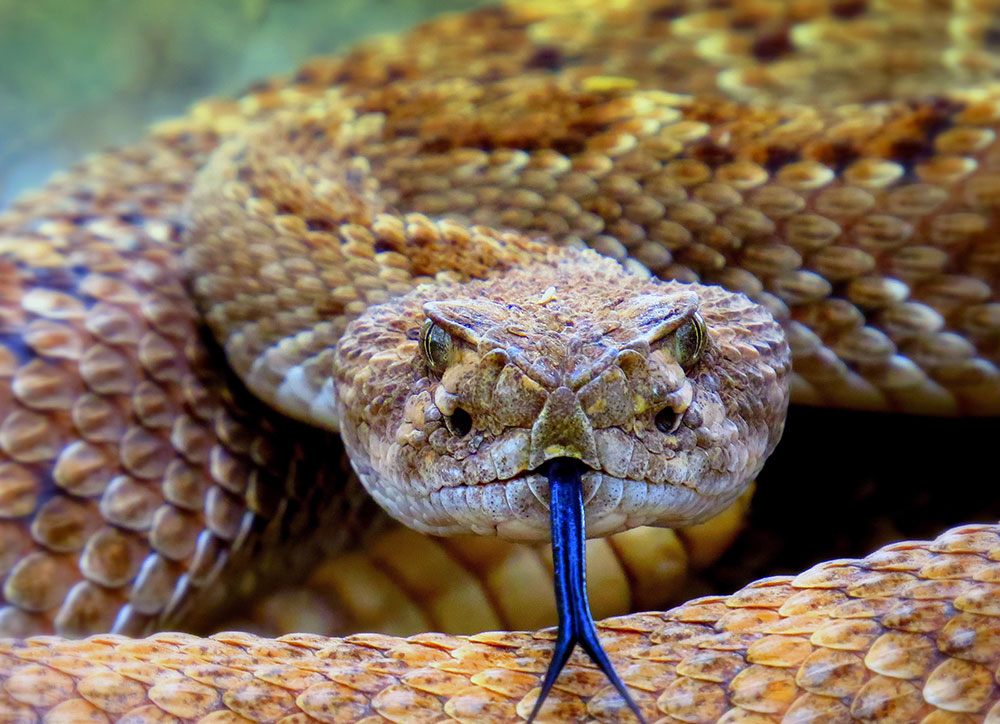IDENTIFY AND AVOID THE VENOMOUS SNAKES WITH FANGS OF FURY
Venomous snakes can be found in warmer climates all over the world. Out of more than 3,000 species of snakes, about 600 of them are venomous, one third of which pose a medical emergency. For example, the king cobra can inject almost 1.5 teaspoons of venom into a human, but that’s more than what’s needed to kill up to 20 people, whereas the Australian coastal taipan delivers 10 times the venom needed to kill a person. The black mamba, death adder, and the diamondback rattlesnake are among the world’s deadliest snakes.
It is estimated by the World Health Organization that around 2.7 million people are bitten by venomous snakes each year (and about 125,000 people worldwide die as a result). In the United States, by contrast, there are only about 9,000 bites each year and deaths are very rare—less than a dozen. But that doesn’t mean it can’t happen.
DENS AND HABITS
Venomous snakes found in the United States include rattlesnakes, copperheads, cottonmouths/water moccasins, and coral snakes. Although the vast majority of venomous species in the U.S. is the rattlesnake, copperheads account for more bites than any other. They are all over the United States, especially in the warmer southern climates.
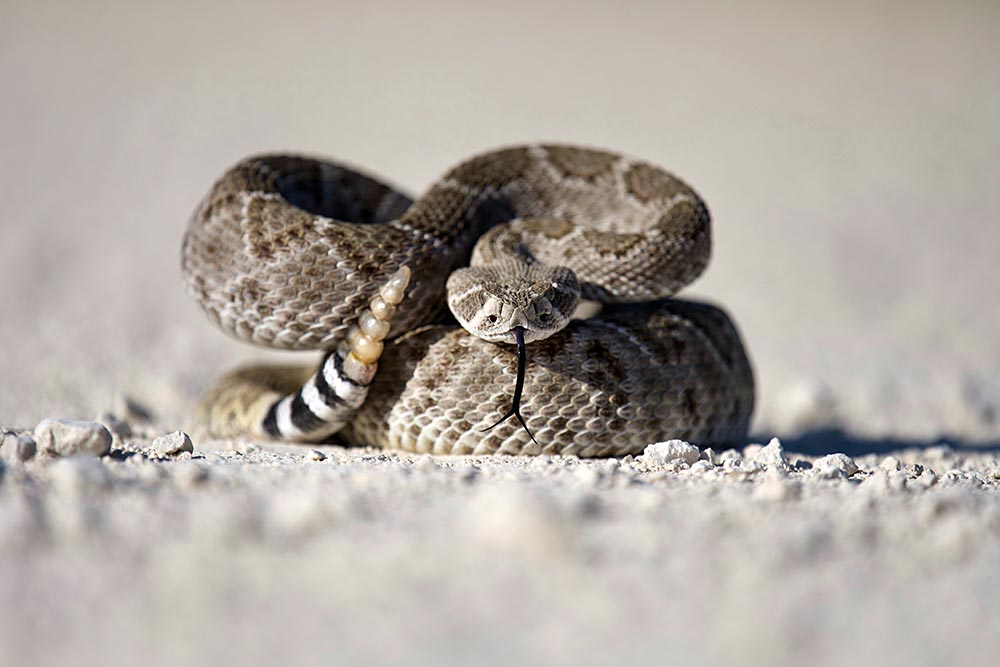
Duncan Sanchez / Unsplash
Rattlesnakes are probably the most popular snake in terms of what people think of when picturing a venomous snake. There are 29 different species of rattler scattered all over the U.S., from the timber rattlesnake found in the Eastern United States, to the western diamondback, which populates the American Southwest.
Rattlesnakes can range from one to eight feet, depending on the species (the big one is the eastern diamondback). They are thick snakes with ridged scales in a variety of colors and patterns, such as dark diamonds, rhombuses, or hexagons on a lighter background.
“Although the vast majority of venomous species in the U.S. is the rattlesnake, copperheads account for more bites than any other.”
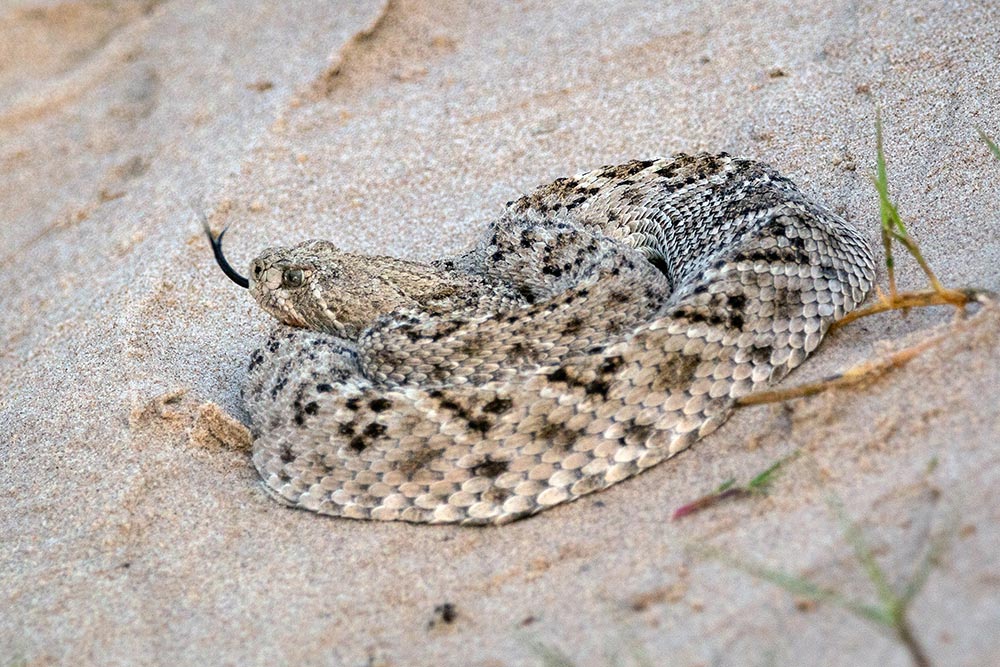
Joshua J. Cotton / Unsplash
Other distinctive physical characteristics include heat-sensing facial pits, hinged fangs that can retract, and live births. These characteristics are shared with other pit vipers, such as the cottonmouth and copperhead. After the tell-tale rattle, the most distinctive physical feature of a rattlesnake is its triangular head, made so because of the venom pouches just behind the eyes. Also, it has terrifying vertical pupils, like in a cat’s eyes.
Rattlesnakes spend most of their time in dens, which they make in rocky crevices or sandy pits under the shade of low bushes. Colder climates allow some snakes to hibernate for the winter in their dens, and generation after generation will use the same dens (some for more than 100 years). Because snakes are cold-blooded animals and exothermic, they like to sun themselves on sun-drenched rocks and in other open places. Though they are not nocturnal, in the hot summer months, they may be more active at night.
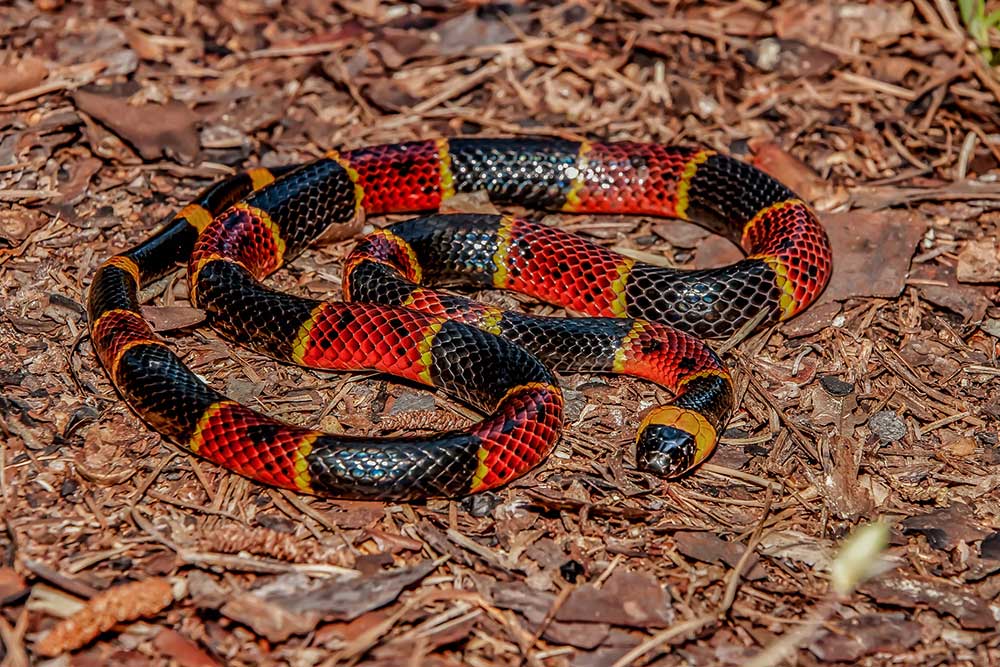
Jason Ondreicka / iStock
Where rattlesnakes mostly blend into their environment, coral snakes have distinct red, black, and yellow bands of color around their relatively small frames, a color scheme that has been copied by many non-venomous snakes, such as the milk snake or the scarlet kingsnake. The rhyme, “Red and yellow can kill a fellow, while red and black is a friend of Jack,” can sometimes be used to distinguish a venomous coral snake from a harmless imposter. However, the best way to tell one from the other is to check the head. A coral snake has a blunt head with black coloring to just behind the eyes (and its bands completely circle its body).
NO BARK, ALL BITE
Although the venom of a coral snake is highly toxic, its fixed fangs are weak and sometimes prove difficult to puncture even human skin, and no deaths from coral snake bites have been reported in North America since the late 1960s, when antivenom was developed. Nevertheless, if left untreated, the victim may experience slurred speech, double vision, and muscular paralysis, which can eventually lead to cardiac arrest.
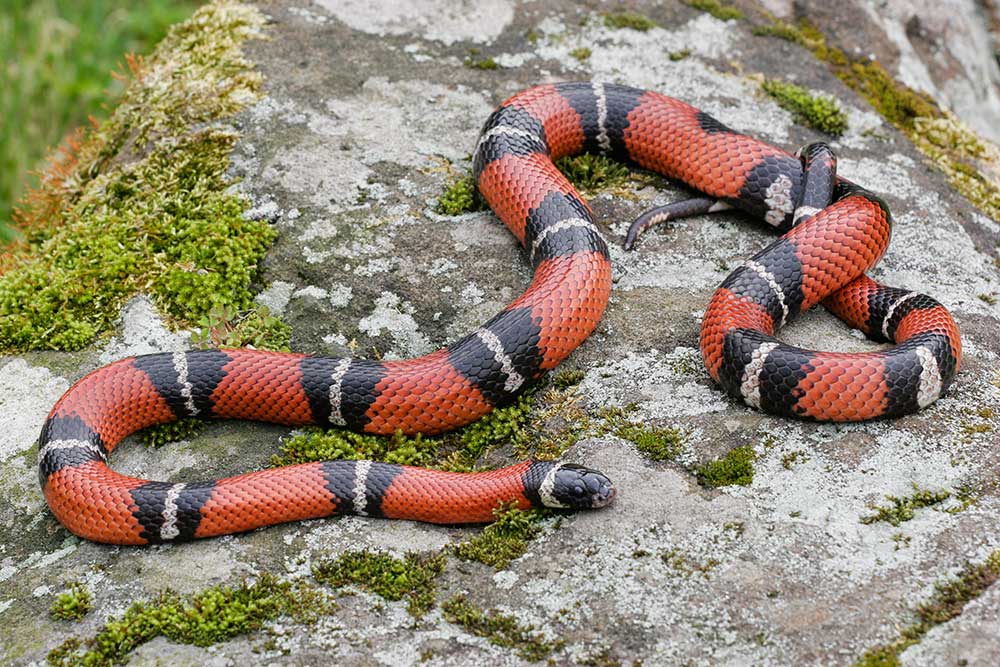
Ernie Decker / iStock
A bite from a rattlesnake, on the other hand, can be very painful, and the neurotoxic venom is extremely potent. Symptoms include temporary and/or permanent tissue and muscle damage, loss of an extremity (depending on the location of the bite), internal bleeding, and extreme pain around the injection area.
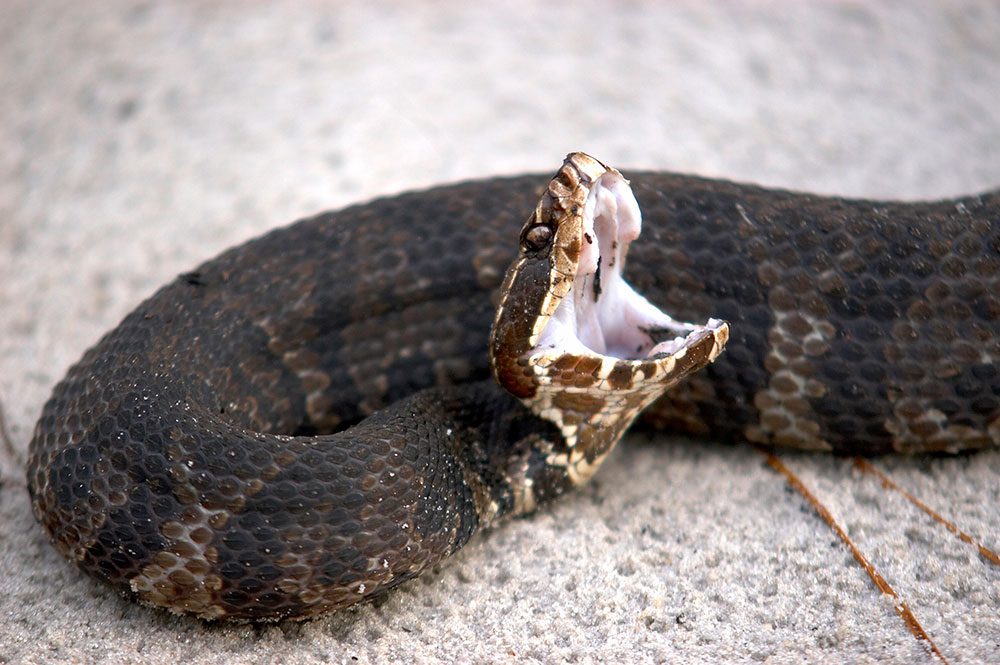
negaprion / iStock
Water moccasins, aka cottonmouths (which get their name from the pale white skin inside their mouths), spend a great deal of time swimming in the various waters of the Southeastern United States (swamps, marshes, drainage ditches, etc.), and because they are also pit vipers—like rattlers and coral snakes—they have triangular heads and thinner necks.
Their venom is very potent, comprised of hemotoxins that prevent the blood from clotting, and although fatalities are rare, their bites can lead to temporary and/or permanent tissue and muscle damage, loss of an extremity, internal bleeding, and extreme pain around the injection area.
WHAT THE VENOM DOES
Statistically speaking, the largest threat of a venomous bite in North America will come from a rattlesnake, as they make up 16 out of the 21 species of venomous snakes on this continent. A typical rattlesnake can strike from a distance of about one-half its length (a three-foot snake has an 18-inch strike radius), and its fangs can plunge about a half-inch into your skin. When bitten, you can expect pain, tingling, and burning in the bite location.
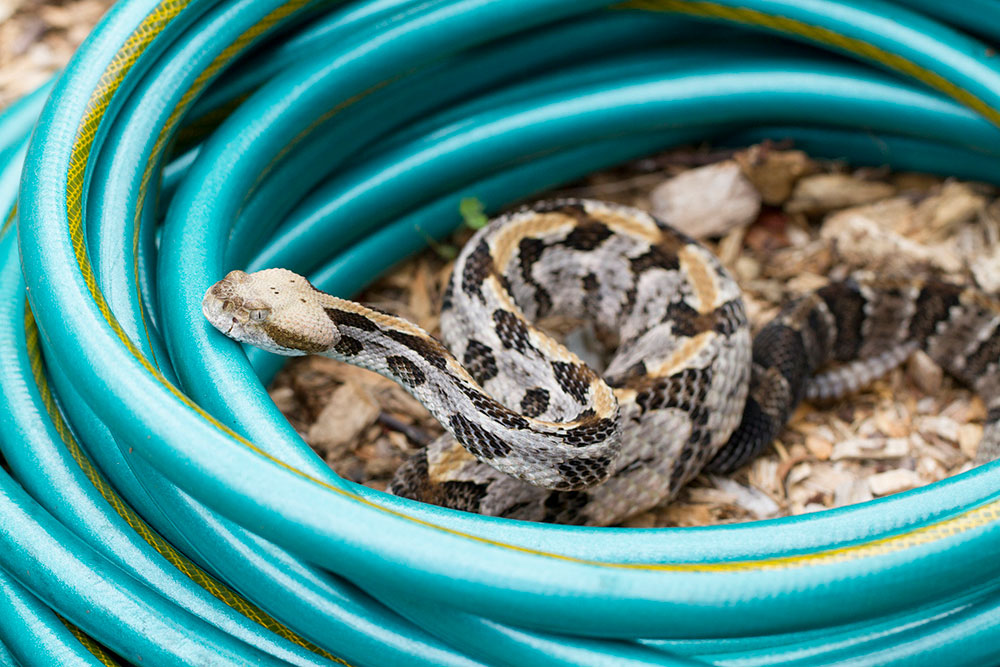
Mark Kostich / iStock
As soon as the venom enters your body (rattlesnake specifically), hemotoxic elements begin to damage tissue and affect the circulatory system by destroying blood cells, skin tissues, and causing internal hemorrhaging. Rattlesnake venom also contains neurotoxic components which immobilize the nervous system, affecting the victim’s breathing and sometimes stopping it. Most rattlesnakes have venom composed primarily of hemotoxic properties. Baby rattlers and the Mojave rattlesnake are the exception; they have venom which contains more neurotoxic properties than hemotoxic, which makes them especially dangerous.
Intravenous injection rarely occurs, but when it does, rapid onset of these symptoms occurs also, which may send toxins further through the bloodstream.
HOW TO AVOID A SNAKE
Because snakes want nothing to do with humans—we’re too big to eat, naturally—there are only a couple of reasons a snake would bite. By avoiding doing these things, you will have a higher chance of avoiding snakes altogether. ears), so heavy footfalls might make them scurry away. Surprising a snake that doesn’t expect you to be there may cause it to lash out in self-defense.
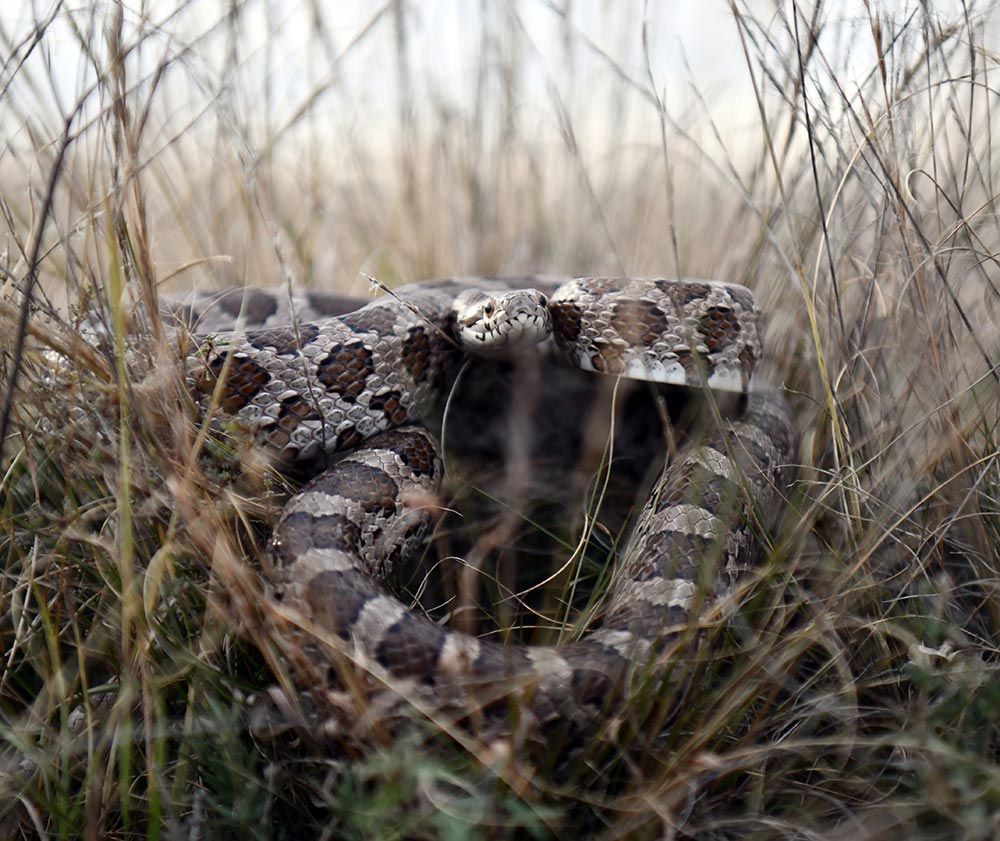
Duncan Sanchez / Unsplash
- Like any animal that feels threatened, if it is cornered and feels there is no way to escape, a snake’s defense mechanisms will take over. For rattlesnakes, it’s hissing and rattling its tail, while a coral snake will make popping sounds. If these don’t work and the snake is cornered, expect it to spring at you with remarkable speed and accuracy.
- Of course, if you provoke it by throwing rocks at it, trying to kill it, poking it with a stick, or chasing it, it will defend itself.
LAST BITE
Although bites from even the most venomous snake in the U.S. can be treated with modern medicine, there are still dangers to be experienced and risks to be taken when going into snake territory. Advances in medicine have reduced a one-time extremely deadly animal to now the cause of only a handful of deaths each year.

Brennan Meinke / Unsplash
There is still no reason you should be cavalier about venomous snakes. Keeping a watchful eye, knowing where they will likely be given a certain time of day and year, understanding the subtle markings of venomous versus non-venomous snakes, and knowing what to do if you come across a snake will help keep you safe in case of an encounter. Most important of all, do your research before going into an area where deadly snakes are known to live. After all, it’s their home, and you’re just the visitor.
HOW TO TREAT A SNAKE BITE
You’ll know you’ve been bitten by a snake because odds are good you’ll see him do it. Most bites happen on the legs and hands, the outward extremities that are usually closest to the snake. Depending on the snake, symptoms may vary, but there will be severe pain, redness, and swelling around the bite site. You may also experience disturbed vision, numbness and tingling in your face and limbs, and labored breathing.
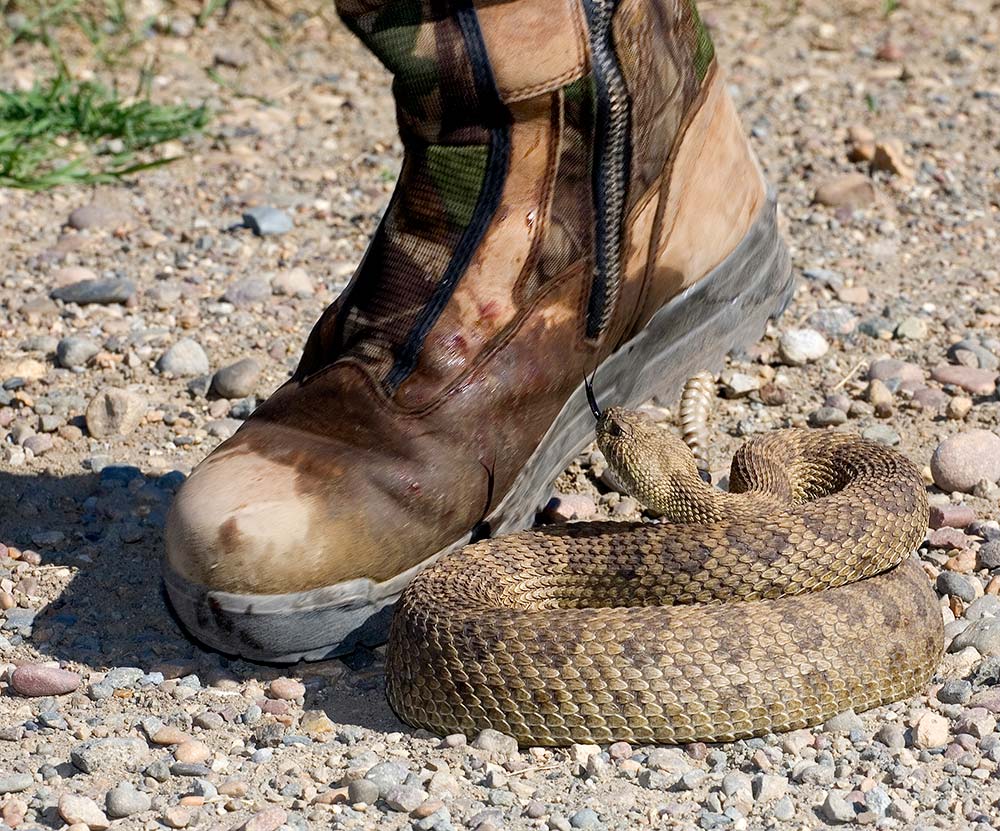
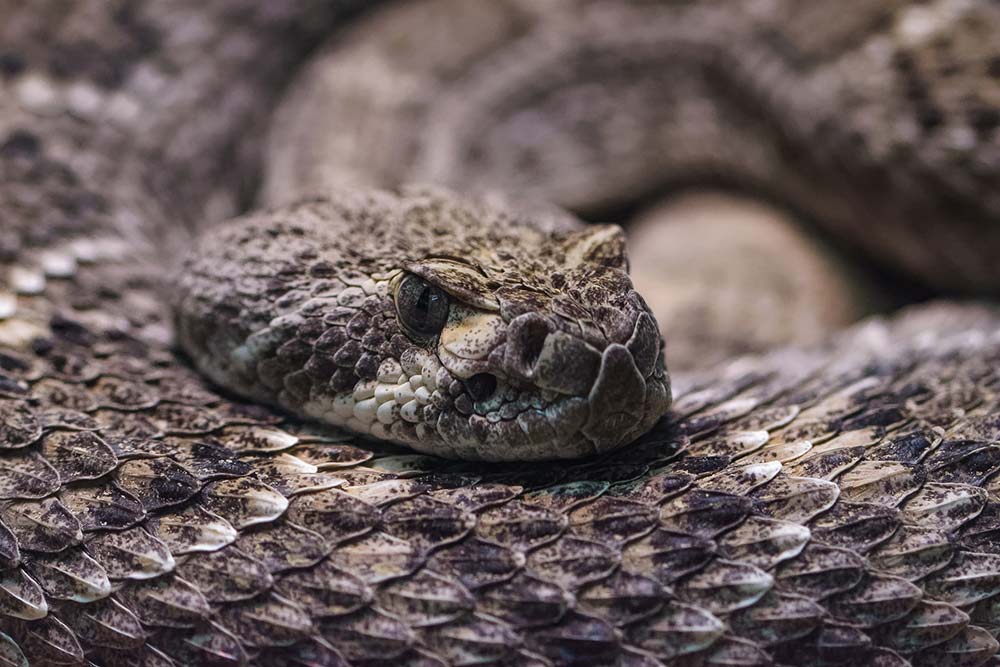
As you dial 911, make note of the type of snake or at least its colors, markings, head shape, etc. Above all else, keep calm, and try not to think about what the venom is doing. Keep the bite location lower than your heart, and remove any watches or rings from that limb (it’ll start to swell). The first thing you should focus on is getting to a hospital as quickly as possible. Barring that, follow these helpful tips:
Do’s »
- Note the time of the bite and the type of snake
- Keep calm and remain as still as possible
- Remove any constricting clothing or jewelry from around the bite area
- Carry the victim, if necessary
- Wash the bite with clean water and soap
- Keep the bite area lower than the heart
- Wrap a bandage two to four inches above the bite if medical help is more than 30 minutes away
Don’ts »
- Let the victim walk or move under his own power
- Use a tourniquet or a cold compress on the bite
- Cut into the snake bite or suck out the venom (by mouth or pump device)
- Give the person any medications unless directed by a doctor
- Raise the area of the bite above the victim’s heart
A version of this article first appeared in the June 2022 issue of American Outdoor Guide Boundless.


